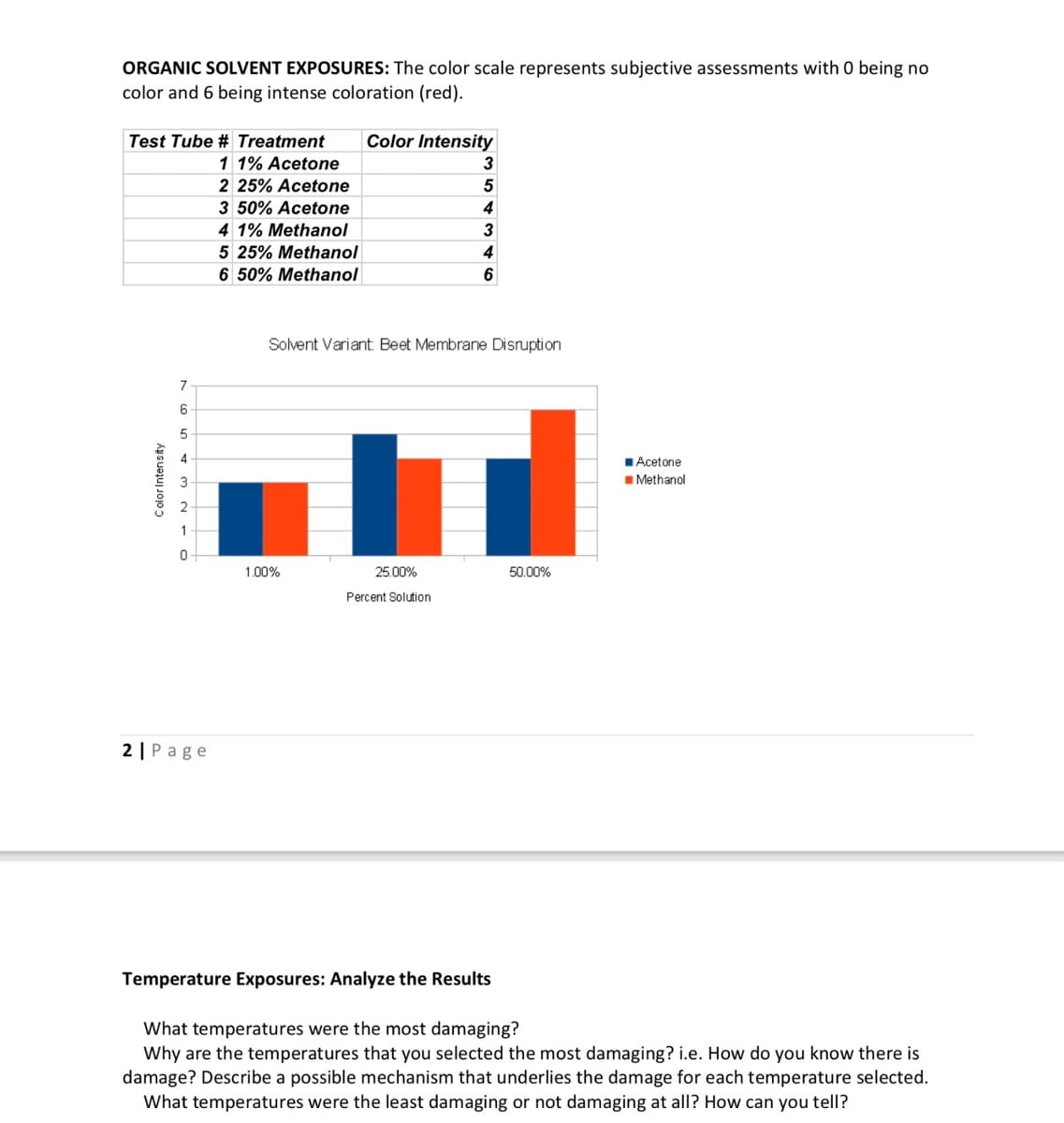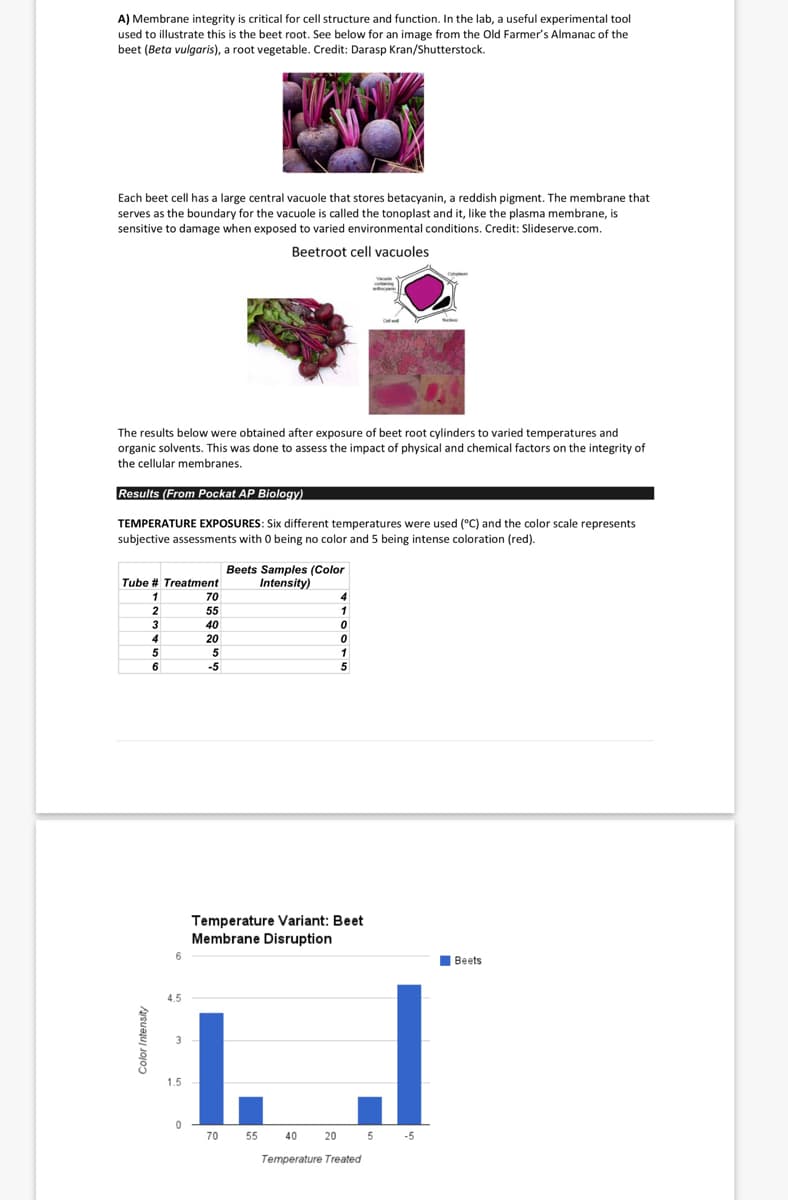Temperature Exposures: Analyze the Results What temperatures were the most damaging? Why are the temperatures that you selected the most damaging? i.e. How do you know there is damage? Describe a possible mechanism that underlies the damage for each temperature selected. What temperatures were the least damaging or not damaging at all? How can you tell?
Temperature Exposures: Analyze the Results What temperatures were the most damaging? Why are the temperatures that you selected the most damaging? i.e. How do you know there is damage? Describe a possible mechanism that underlies the damage for each temperature selected. What temperatures were the least damaging or not damaging at all? How can you tell?
Chapter8: Forms Of Drugs And How They Act
Section: Chapter Questions
Problem 30RQ
Related questions
Question
Need help with the questions 3 question below

Transcribed Image Text:ORGANIC SOLVENT EXPOSURES: The color scale represents subjective assessments with 0 being no
color and 6 being intense coloration (red).
Test Tube # Treatment
Color Intensity
1 1% Acetone
2 25% Acetone
5
3 50% Acetone
4
4 1% Methanol
3
5 25% Methanol
6 50% Methanol
6
Solvent Variant Beet Membrane Disruption
7
6
5
TAcetone
3
IMethanol
2
1
1.00%
25.00%
50.00%
Percent Solution
2 |Page
Temperature Exposures: Analyze the Results
What temperatures were the most damaging?
Why are the temperatures that you selected the most damaging? i.e. How do you know there is
damage? Describe a possible mechanism that underlies the damage for each temperature selected.
What temperatures were the least damaging or not damaging at all? How can you tell?
Color Intensity

Transcribed Image Text:A) Membrane integrity is critical for cell structure and function. In the lab, a useful experimental tool
used to illustrate this is the beet root. See below for an image from the Old Farmer's Almanac of the
beet (Beta vulgaris), a root vegetable. Credit: Darasp Kran/Shutterstock.
Each beet cell has a large central vacuole that stores betacyanin, a reddish pigment. The membrane that
serves as the boundary for the vacuole is called the tonoplast and it, like the plasma membrane, is
sensitive to damage when exposed to varied environmental conditions. Credit: Slideserve.com.
Beetroot cell vacuoles
The results below were obtained after exposure of beet root cylinders to varied temperatures and
organic solvents. This was done to assess the impact of physical and chemical factors on the integrity of
the cellular membranes.
Results (From Pockat AP Biology)
TEMPERATURE EXPOSURES: Six different temperatures were used (°C) and the color scale represents
subjective assessments with 0 being no color and 5 being intense coloration (red).
Beets Samples (Color
Intensity)
Tube # Treatment
1
70
2
55
1
3
40
20
5
6
-5
5
Temperature Variant: Beet
Membrane Disruption
I Beets
I J
4.5
1.5
70
55
40
20
5 -5
Temperature Treated
Expert Solution
This question has been solved!
Explore an expertly crafted, step-by-step solution for a thorough understanding of key concepts.
Step by step
Solved in 2 steps

Knowledge Booster
Learn more about
Need a deep-dive on the concept behind this application? Look no further. Learn more about this topic, biology and related others by exploring similar questions and additional content below.Recommended textbooks for you

